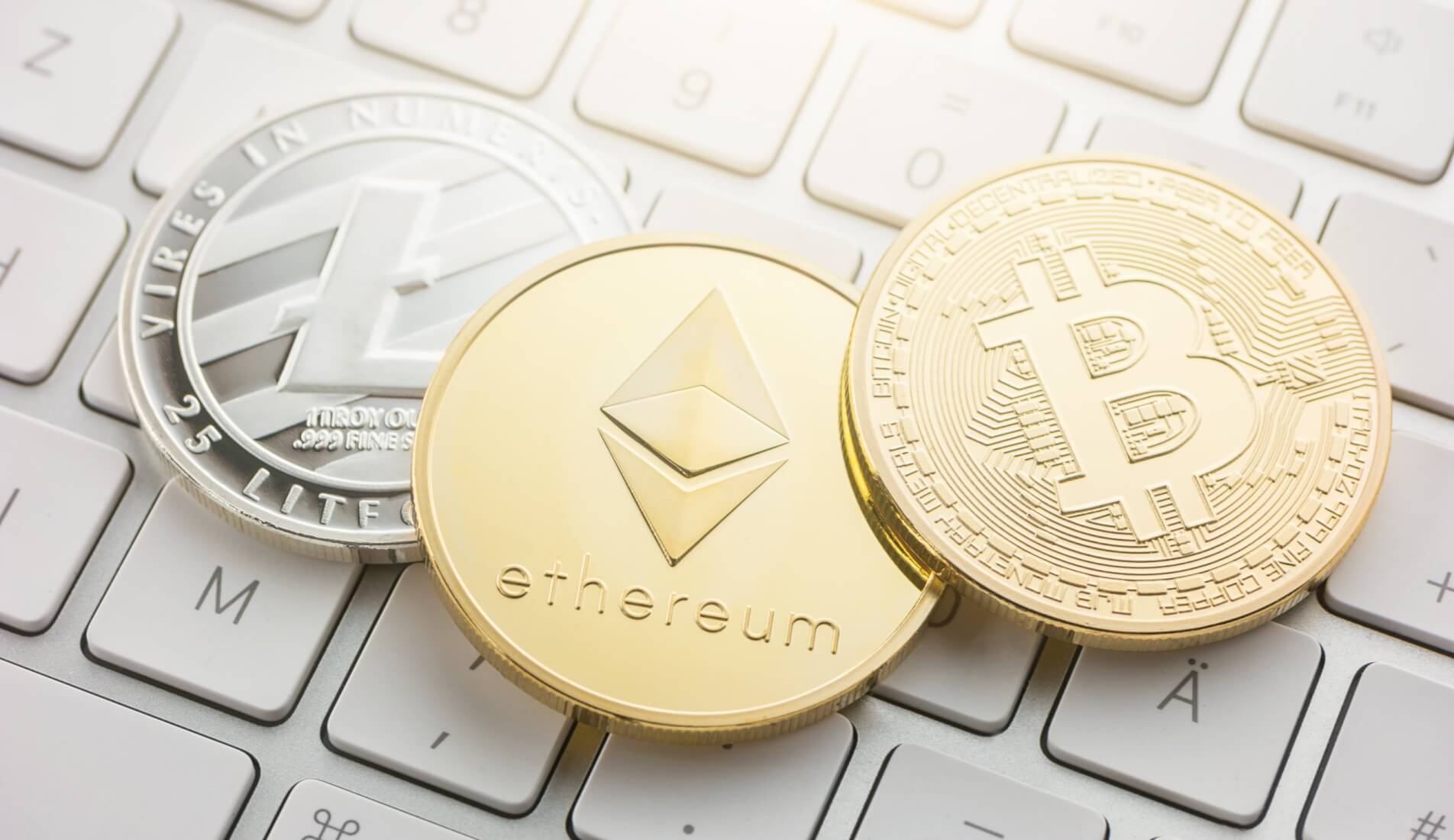Welcome to our comprehensive guide on sending and receiving funds in the form of stocks or Bitcoin. Whether you’re new to the world of cryptocurrencies or an experienced investor, this guide is here to help you understand the intricacies of transferring these assets.
When it comes to sending and receiving funds, it’s important to understand that the process may involve certain charges. Before initiating any transfer, you should familiarize yourself with the fees and charges associated with the platform or service you are using. This will help you make informed decisions and avoid any unexpected costs.
When sending Bitcoin, the process is quite different from traditional stock transfers. Bitcoin operates on a decentralized network, known as the blockchain, which ensures transparency and security. To send Bitcoin, you will need the recipient’s public address. Once you have this information, you can initiate the transfer through a digital wallet, ensuring the correct amount is sent.
On the other hand, sending stocks involves a different set of rules and procedures. This typically occurs through a brokerage or investment platform. To send stocks, you will need the recipient’s brokerage account details, which typically include their account number and relevant information. The transfer can be initiated through the platform, ensuring the correct number of stocks is sent to the recipient.
Regardless of whether you’re sending stocks or Bitcoin, it’s crucial to double-check all the details before confirming the transfer. Even small mistakes can result in significant consequences, such as funds being sent to the wrong recipient or getting stuck in a block. Take the time to review the information and ensure accuracy.
In conclusion, this comprehensive guide has provided you with an overview of sending and receiving funds in the form of stocks or Bitcoin. Whether you’re new to the process or a seasoned investor, always do your research and familiarize yourself with the specific procedures and charges associated with the platform or service you are using. With the right knowledge and attention to detail, you can safely and successfully transfer your assets.
- Common Use Cases for Sending Stock or Bitcoin
- Broker-Dealer Disclosures
- Important Things to Note
- Still Need Help
- Receiving Bitcoin
- Receiving Stock
- Frequently Asked Questions:
- What is the process of sending and receiving stocks?
- Are there any fees involved in sending and receiving stocks?
- What are the advantages of sending and receiving stocks?
- What are the risks associated with sending and receiving stocks?
- Can you send and receive Bitcoin in a similar way to stocks?
- Video:
- Explain BITCOIN to Complete Beginners: Ultimate Guide!!
Common Use Cases for Sending Stock or Bitcoin

Sending stock or bitcoin involves transferring ownership from one person or entity to another. There are several common use cases for sending stock or bitcoin:
- Purchasing goods and services: One common use case for sending stock or bitcoin is to make purchases. Users can send funds in the form of stocks or bitcoin to pay for goods and services.
- Transferring ownership: Another common use case is transferring ownership of stocks or bitcoin between individuals or entities. This can occur when an individual wants to transfer ownership of their stocks or bitcoin to someone else.
- Investment trading: Many people send stocks or bitcoin for investment purposes. They can transfer stocks or bitcoin to a brokerage account or exchange to buy or sell them.
When sending stocks or bitcoin, users should be aware that there may be charges or fees associated with the transfer. These charges can vary depending on the platform or service used for sending and receiving.
There are also some considerations when sending stocks or bitcoin:
- Security: When sending stocks or bitcoin, it is important to ensure that the transfer is secure. This may involve using secure platforms or services that have strong encryption and authentication measures in place.
- Accuracy: Users should double-check the accuracy of the recipient’s information, such as their stock trading account or bitcoin wallet address, to ensure that the funds are sent to the correct recipient.
- Confirmation: Users should also wait for confirmation that the stocks or bitcoin have been successfully sent and received. This can help to avoid any potential issues or discrepancies.
In conclusion, sending stocks or bitcoin can be done for various purposes such as purchasing goods, transferring ownership, or investment trading. Users should be mindful of any charges or fees involved and take necessary precautions to ensure the security and accuracy of the transfer.
Broker-Dealer Disclosures

When it comes to sending and receiving stock or Bitcoin, there are certain obligations and responsibilities that a broker-dealer should fulfill. These disclosures are meant to help investors make informed decisions and ensure transparency in the financial market.
Firstly, a broker-dealer should clearly disclose the risks associated with investing in stocks or Bitcoin. This includes the possibility of losing money, market volatility, and potential regulatory changes that may impact the value of these assets.
Additionally, brokers should provide information regarding their fees and charges. Investors should be aware of any transaction fees, management fees, or other costs they may incur when buying or selling stocks or Bitcoin. This transparency allows investors to evaluate the overall cost of their investments and make informed decisions.
Another important disclosure is related to the transfer and settlement of stocks or Bitcoin. Brokers should provide details on the timeline and process of transferring stocks or Bitcoin between different accounts or platforms. This information helps investors understand how long it may take for their funds to be transferred and the steps involved in the process.
Furthermore, brokers should disclose any potential conflicts of interest that may arise in their dealings. For example, if a broker-dealer has a stake in certain stocks or Bitcoin, they should disclose this information to investors. This ensures that investors are aware of any potential biases and can make investment decisions accordingly.
Lastly, brokers should inform investors about the security measures they have in place to protect their stocks or Bitcoin. This includes details on encryption, multi-factor authentication, and other security protocols. By understanding the security measures implemented by the broker, investors can feel more confident about the safety of their assets.
Overall, broker-dealer disclosures play a crucial role in safeguarding investors’ interests and promoting trust in the financial markets. Investors should carefully review these disclosures before engaging with a broker-dealer and seek clarification if needed. By being well-informed, investors can make educated decisions about their investments and navigate the world of stocks and Bitcoin with confidence.
Important Things to Note

- Sending or receiving stocks involves a charge: It is important to be aware that when sending or receiving stocks, there may be fees or charges involved. These fees can vary depending on the platform or broker that you are using, so it is essential to understand the fee structure before initiating any transactions.
- Transfer of stocks: When sending or receiving stocks, the transfer typically occurs through a process known as a “book-entry transfer”. This means that the stocks are electronically transferred between accounts, rather than physically moving the stocks from one location to another.
- Block periods: Some platforms or brokers may have specific block periods during which you are not able to send or receive stocks. This is important to note if you need to make a time-sensitive transfer or trade.
- Bitcoin transactions: If you are sending or receiving Bitcoin, it is important to be cautious and ensure that you are sending the funds to the correct address. Bitcoin transactions are irreversible, which means that if you send Bitcoin to the wrong address, you may not be able to recover the funds.
- Additional verification: In some cases, additional verification may be required when sending or receiving stocks or Bitcoin. This can include providing identification documents or completing additional security measures. These steps are designed to help protect your funds and prevent fraudulent activity.
In conclusion, when sending or receiving stocks or Bitcoin, it is important to be aware of the fees involved, the transfer process, any block periods that may be in place, and the importance of double-checking addresses. Taking these factors into account can help ensure that your transactions are successful and secure.
Still Need Help
If you still need help with sending or receiving stocks or Bitcoin, there are a few options you can consider.
- You can reach out to customer support for the platform or exchange you are using. They should be able to assist you with any technical issues or questions you may have.
- There are also online forums and communities dedicated to trading and investing, where you can ask for advice or guidance from experienced users.
- If you are having trouble with a specific transaction, you can check the status of the transaction on the blockchain. This will show you if the transaction has been confirmed or is still pending.
- Before sending stocks or Bitcoin, you should always double-check the recipient address to ensure that you are sending the funds to the correct person or entity. A small mistake in the address can result in the funds being sent to the wrong place.
- Some platforms or exchanges may charge a fee for sending or receiving stocks or Bitcoin, so you should be aware of any potential charges before initiating a transaction.
Remember that sending and receiving stocks or Bitcoin involves financial transactions, so it’s important to take the necessary precautions and be cautious when dealing with funds. If you’re unsure about any aspect of the process, it’s always a good idea to seek help or advice from professionals or experts in the field.
Receiving Bitcoin

When it comes to receiving Bitcoin, the process is relatively straightforward. Here are the steps to follow:
- Create a Bitcoin wallet: In order to receive Bitcoin, you will need a wallet to store your coins. There are many different types of wallets available, including hardware wallets, software wallets, and online wallets.
- Share your Bitcoin address: Once you have a wallet, you can share your Bitcoin address with the person or entity who will be sending you the coins. Your Bitcoin address is a unique identifier that allows others to send Bitcoin to you.
- Provide additional information if necessary: Depending on the sender’s requirements, you may need to provide additional information, such as a payment reference or a specific memo or tag. This information helps ensure that the funds are properly credited to your account.
- Wait for the transaction to be confirmed: After the sender has initiated the transaction and sent the Bitcoin, it will need to be confirmed by the Bitcoin network. This process typically takes a few minutes but can sometimes take longer if the network is congested.
- Check your wallet balance: Once the transaction is confirmed, the Bitcoin will appear in your wallet balance. You can check your wallet balance to verify that the funds have been received.
It is important to note that receiving Bitcoin does not typically incur any charges. However, there may be fees associated with certain types of wallets or services. These fees are usually minimal and are used to help maintain the Bitcoin network.
Receiving Bitcoin is similar to receiving stocks or transferring funds between bank accounts. However, the main difference is that Bitcoin transfers are done on a decentralized and transparent blockchain network, while stocks and bank transfers involve centralized systems.
If you need help with the process of receiving Bitcoin, there are many resources available online. You can refer to the documentation provided by your wallet provider or seek assistance from cryptocurrency forums and communities.
Receiving Stock

When you want to receive stock, there are several steps involved:
- Create an account: To receive stock, you should first create an account with a reputable stock brokerage firm or an online trading platform.
- Provide necessary information: Once you have an account, you will be required to provide personal information, such as your name, address, and social security number, to comply with regulatory requirements.
- Choose the stock: After your account is set up and verified, you can choose the stock you want to receive. This can be done by searching for the stock symbol or company name.
- Place an order: Once you have selected the stock you want to receive, you can place an order to buy it. This involves specifying the number of shares you want to receive and the price at which you are willing to buy.
- Wait for execution: After placing the order, you will need to wait for the stock brokerage firm to execute the trade. This can take a few seconds to minutes, depending on market conditions.
- Confirmation: Once the trade is executed, you will receive a confirmation showing the details of the transaction, including the stock you received, the price, and any applicable fees or charges.
- Settlement: The final step in receiving stock involves settlement, where the ownership of the stock is officially transferred to your account. This process usually takes a few business days.
It’s important to note that the process of receiving stock is similar to receiving bitcoin or other cryptocurrencies. However, there are some key differences. For example, when receiving stock, you should use a stock brokerage firm or an online trading platform, while receiving bitcoin involves using a cryptocurrency exchange or wallet. Additionally, the transfer of stocks typically takes longer to settle compared to bitcoin transactions.
If you need any help with receiving stock or transferring funds, there are customer support services available with most stock brokerage firms or online trading platforms. They can assist you in navigating the process and answer any questions you may have.
Frequently Asked Questions:
What is the process of sending and receiving stocks?
The process of sending and receiving stocks involves several steps. First, you need to have a brokerage account. Then, you need to provide the necessary information (such as the recipient’s account number) to your broker. After that, you can initiate the transfer by submitting a request to your broker. The transfer will be processed, and the stocks will be sent to the recipient’s account.
Are there any fees involved in sending and receiving stocks?
Yes, there are usually fees involved in sending and receiving stocks. Brokers may charge a fee for each transaction, which can vary depending on the broker and the type of transfer (e.g., domestic or international). It’s important to check with your specific broker for their fee structure.
What are the advantages of sending and receiving stocks?
Sending and receiving stocks can have several advantages. It allows you to transfer ownership of stocks to someone else, which can be useful for gifting or estate planning purposes. It also provides flexibility in managing your investments, as you can transfer stocks between your own accounts or to other individuals. Additionally, it can be a way to diversify your investment portfolio or take advantage of investment opportunities.
What are the risks associated with sending and receiving stocks?
There are a few risks associated with sending and receiving stocks. One risk is that the value of the stocks may fluctuate between the time of initiating the transfer and the time it is completed. This means that the recipient may receive stocks that are worth less than they were at the time of the transfer. Another risk is the potential for fraud or unauthorized transfers. It’s important to use reputable brokers and take appropriate security measures to minimize these risks.
Can you send and receive Bitcoin in a similar way to stocks?
Yes, you can send and receive Bitcoin in a similar way to stocks. Bitcoin is a digital currency that can be transferred between individuals using a cryptocurrency wallet. Just like with stocks, you need to provide the necessary information (such as the recipient’s wallet address) and initiate the transfer. However, there are some differences, such as the fact that Bitcoin transfers are usually processed on a decentralized network and may involve transaction fees.
Video:
Explain BITCOIN to Complete Beginners: Ultimate Guide!!







